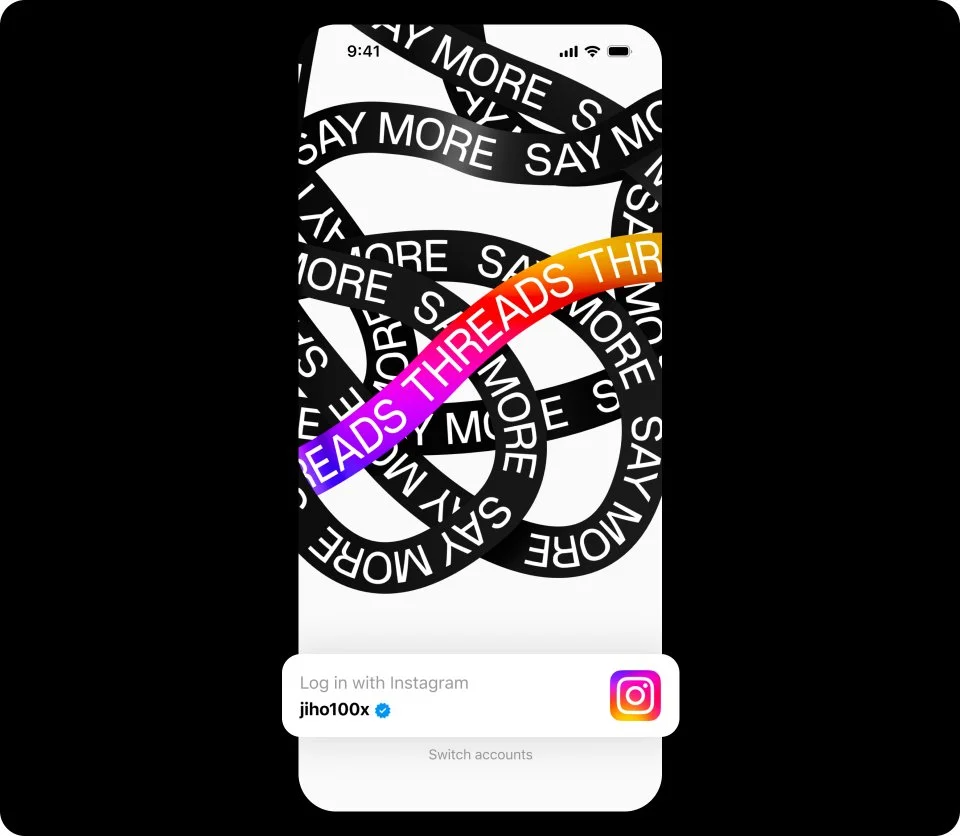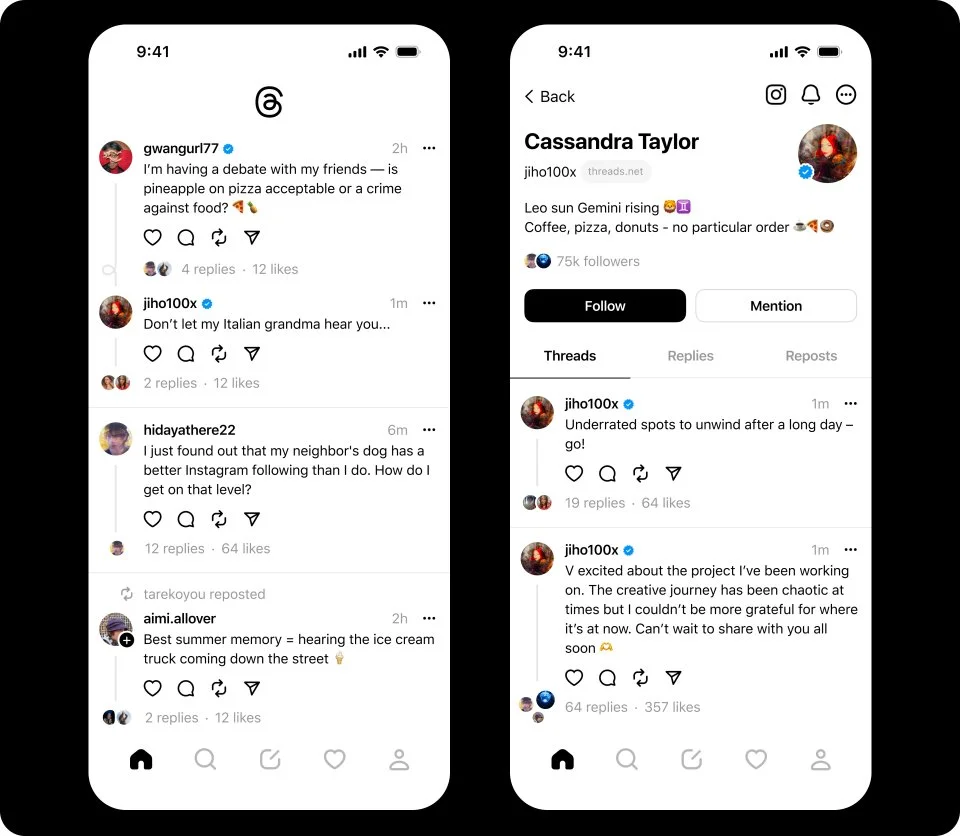What’s the story on social media’s shiny new toy, Threads? Keep reading for our take on this trending new app and how we’re advising our nonprofit clients to move forward.
Introduction
Everyone is talking about Instagram’s new “Twitter Killer” - Threads. It’s a shiny new toy in the social media world, offering a space for text-based posting and public conversations that resembles Twitter in many ways. But, what’s the catch? Well, before you dive in headfirst, let’s take a closer look. Threads and privacy concerns have been a huge topic of discussion, and we’ve been flooded with questions from clients asking whether or not they should jump on the bandwagon. Truth be told, we’re not fully on board - yet. Let’s dig into what Threads is all about, and why we’re not ready to give it our official stamp of approval.
Image credits to Facebook.com
Meta’s New Social Media App, Threads
Threads was just released by Instagram July 7, 2023, and aims to combine the best aspects of Instagram with an emphasis on text-based content and real-time contribution to public conversations. It’s very similar to Twitter, however, what distinguishes it from previous Twitter rivals is its ability to easily integrate with Instagram. You can easily choose to automatically follow everyone from your Instagram account and vice versa to receive the follow back, which makes this platform intriguing for organizations with a large Instagram following.
The interface and functionality are very similar to Twitter. Your post can be up to 500 characters, and include links, pictures, and short videos. You can also easily cross-promote posts on Instagram to drive a larger conversation and promote sharable content. Currently, Threads does not offer advertising capabilities. However, according to Axios, it is working on bringing in branded content tools available for paid promotion opportunities.
So, how have users been responding to the new release of Threads? In just one week, Threads grew to over 100 million users. For comparison’s sake, it took ChatGPT two months to grow to that size. From a brand perspective, large organizations seem to be more cautious rather than early adopters of this app due to its rising concerns for user privacy and stability.
The Potential Drawback of Threads
While Threads offers some enticing capabilities and opens doors for your social media management strategy, should your nonprofit establish an account? The answer isn’t that simple. There are some potential concerns from the Threads app that are turning a lot of the leading consumer brands off from using the app and fear of what it could turn into.
#1: Privacy Concerns
There’s a big conversation surrounding user privacy with the app as it may collect sensitive information about users including financial data, browsing history, precise location, and more. This raises concerns about the extent of data profiling and the potential misuse of users’ information.
#2: Thread’s Supplemental Privacy Policy
According to Thread’s Supplemental Privacy Policy, if you ever want to delete your Threads profile, you would also have to delete your entire Instagram account. This is a huge risk for organizations of all sizes, but especially for those with a large following. This limited flexibility raises questions about the control users have over their profiles and data on the platform.
#3: GDPR Violations & EU Non-Compliance
Meta, the parent company of Threads, has faced scrutiny and fines from the European Union for violations of the General Data Protection Regulation (GDPR). This history of non-compliance and privacy issues raises concerns about Meta's commitment to safeguarding user data and complying with EU regulations. As a result, Threads is currently not available in the EU, creating limitations for organizations operating in those regions.
Given these red flags and the importance of privacy and account security, nonprofits should carefully evaluate whether the potential benefits of using Threads outweigh the risks. It is crucial to prioritize protecting user data, complying with privacy regulations, and maintaining control over organizational accounts. Organizations should assess the impact on their audience, consider the alternatives, and make an informed decision that aligns with their privacy and security values.
Image credits to Facebook.com
The Appeal of Threads
Despite these concerns, Threads has great potential for success due to the rising user frustrations and limitations of Twitter coupled with the ability to scale and provide users with a great in-app experience because of its parent company.
Already on the horizon, Instagram is working to enable Threads compatibility with ActivityPub, the body responsible for the open standards that power the modern web. This integration would make Threads interoperable with other apps that support the ActivityPub protocol, such as WordPress. The ability to seamlessly connect with these platforms would open up new opportunities for users, allowing them to reach a wider audience and engage with discussions beyond the Threads community.
Similar to Twitter, Threads facilitates genuine interactions with your audience and promotes engagement with trending discussions. This feature in specific can be a huge opportunity for nonprofit organizations to build awareness and provide information on public conversations relevant to their mission.
Threads provide organizations with the opportunity to explore and refine their brand. Because of its text-based nature, you can experiment with new messaging strategies, diversify content formats, and potentially capture a wider audience of engaged donors and supporters of your mission.
Should My Nonprofit Create a Threads Account? Advice From a Digital Marketing Agency
This is the question of the hour, and the answer isn’t simple. There are risks that you shouldn’t overlook when it comes to your control, privacy, and online security. Like any startup, Threads may encounter challenges and uncertainties on its path to becoming a successful social media platform.
Our Advice: Exercise Caution and Wait
As for now, our advice to clients is to exercise caution and wait. Instead of rushing to connect your Instagram account to Threads and potentially facing difficulties with deleting your profile, it could be beneficial to wait for the initial hype to settle and to allow time for Meta to address security concerns that have arisen since its release.
Already Have a Threads Account?
If you have already created an account, then we advise you to proceed with caution, post responsibly and consider the following best practices:
Develop a Communications Strategy: Establish a clear strategy to guide your team in participating in trending conversations and conveying your organization's mission online. It’s important to note that the voice and tone on Threads is more conversational than on other platforms like Facebook and Instagram.
Collaborate with Your Team: Remember that adding Threads to your social media portfolio is going to take time and energy, so now is the time to tap into your team’s creativity and brainstorm what purpose you want Threads to have in your organization's online presence.
Experiment: Try using other content formats when posting like sharing links to articles, videos, or images of fundraising events. Threads also may be a great opportunity to test new brand messaging, share stories, gather participants’ feedback, and more.
Engage: If Threads is anything like Twitter (and it’s pretty similar!), then carve out 1-2 hours per day to like, comment, share, and contribute to public conversations. Active engagement will help you build connections and establish a strong presence.
Post Consistently: Similar to consistent engagement, it’s important to post consistently to remain relevant and build brand awareness. One of the best ways to gather inspiration for what to post is by tapping into what people are already talking about in public conversations, testing new types of content, and diving into analytics once you’ve built up enough content.
Undoubtedly, Threads will continue to evolve over the next few months and years. Remind your team to stay patient and accept the possibility that it may not work out as expected. As it does continue to change and new features are released, be vigilant and adaptable.

















